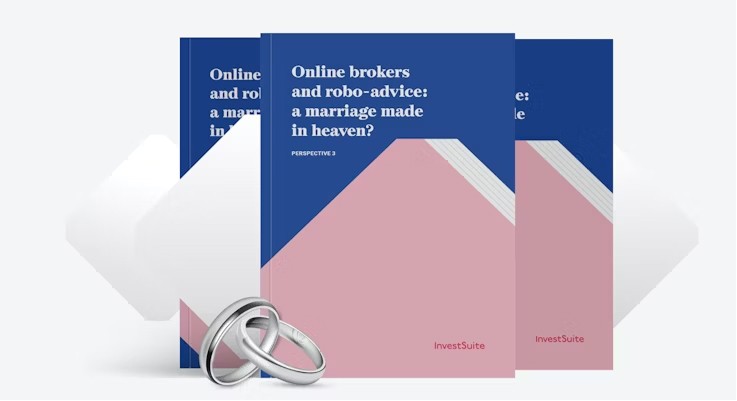As self-directed investing continues to gain traction worldwide, the expectations for self-investing apps have evolved dramatically. According to recent reports from Deloitte, Capgemini, and leading UX/UI design agencies specializing in finance, 2024-2025 is the year when user experience, personalization, and technology integration become the true differentiators in the crowded self-investing app market.
Whether you’re a wealth manager, a fintech startup, or a financial institution planning to offer a self-investing platform, implementing these essential features is key to attracting and retaining the average retail investor in 2025.
In this article, we explore some must-have features for self-investing apps, backed by industry research and real-world examples, including how InvestSuite’s Self Investor platform leads the way.
1. User-Centric and Intuitive Interface
Research by Deloitte highlights that simplicity and intuitive design are paramount for fintech apps targeting self-directed investors. Users expect an app that is easy to navigate without sacrificing functionality.
Example: Robinhood’s minimalistic yet powerful interface has driven its explosive growth by making complex investing accessible for beginners.
InvestSuite’s Edge: Self Investor offers a clean, modern UI designed to guide users through their investment journey smoothly, regardless of experience level.
2. Personalized Inspiration Insights
Inspiring self-directed investors with educational bits related to their investment behaviour accounts for improved decision making and client retention. Essentially, a broader perspective, gained through education, boosts client investment confidence.
Example: Wealthfront uses AI to tailor portfolio recommendations based on personal risk tolerance and financial goals.
InvestSuite’s Edge: Self Investor integrates inspirational insights that help users make investment decisions more confidently.
3. Real-Time Portfolio Tracking and Notifications
Self-investors demand transparency and control with instant access to their portfolio performance and timely alerts.
Example: E*TRADE offers real-time tracking with customizable notifications that keep investors engaged and informed.
InvestSuite’s Edge: Self Investor delivers real-time portfolio updates and personalized notifications, helping users stay ahead in fast-moving markets.
4. Educational Content and Tools
Capgemini’s findings highlight that digitalized client journeys, including embedded learning modules, foster confidence and reduce churn rates, keeping investors engaged in their financial journey.
Example: Acorns provides microlearning modules that educate investors on key concepts.
InvestSuite’s Edge: We embed educational explanations and market context within the platform, enhancing financial literacy without overwhelming users.
5. Seamless Onboarding with KYC/AML Compliance
A frictionless onboarding process is vital to convert visitors into active investors. Compliance with regulatory standards must be smooth and non-intrusive.
Example: Interactive Brokers offers a streamlined KYC process, reducing barriers to entry.
InvestSuite’s Edge: Our Self Investor platform features an efficient, fully compliant onboarding process, minimizing drop-offs.
6. Mobile-First Design
According to industry research, increasingly more investors opt for the comfort online apps offer, with even more investors opting for trading through mobile apps. Mobile-first design ensures optimal user experience on any device.
Example: SoFi’s app delivers full functionality on mobile, catering to users on-the-go.
InvestSuite’s Edge: Self Investor is designed mobile-first, with responsive layouts and touch-friendly interactions.
7. Catering to modern investors with ETFs
Offering Exchange-Traded Funds (ETFs) within self-directed investment platforms is increasingly vital for financial institutions aiming to meet the preferences of younger investors. Recent data indicates that Gen Z investors are significantly inclined towards ETFs, with 25% of their investments allocated to these funds, and over 40% having invested in at least one ETF.
Notably, four of the top five investment choices among Gen Z and Millennials are ETFs.
Example: InvestEngine offers ETF-only portfolios and has introduced 'LifePlans', which are ready-made ETF portfolios tailored to various risk levels.
InvestSuite’s Edge: Our platform enables financial institutions to provide ETF investing capabilities within their existing digital ecosystems.
8. Diverse Investment Options
Investors increasingly seek diversified portfolios and alternative assets. An EY survey revealed that 64% of retail investors are already investing in digital assets or digital-assets related products.
Example: Bitpanda offers a wide range of crypto portfolios alongside traditional options.
InvestSuite’s Edge: Our platform supports a full range of investment instruments, including stocks, trackers, crypto currencies and derivatives on a wide selection of global markets to meet evolving client demands.
What to look forward to
1. Conversational Interfaces: Enhancing User Engagement
Conversational AI is becoming a cornerstone in modern investing apps, offering users intuitive, dialogue-based interactions. These interfaces simplify complex financial concepts, making investing more accessible to a broader audience. The global conversational AI market, valued at $13.86 billion in 2024, is projected to reach $100.80 billion by 2034, reflecting its growing significance across industries, including finance.
2. AI-First Features: Personalized Investment Strategies
Artificial Intelligence is transitioning from a supportive tool to the central component of investment platforms. AI-first applications leverage machine learning algorithms to provide personalized investment advice, real-time market analysis, and predictive insights. According to Deloitte, generative AI-enabled applications are expected to become the leading source of retail investment advice by 2027, indicating a significant shift towards AI-driven decision-making in personal finance.
3. Hybrid Models: Integrating Self-Investing with Advisory Services
The future of investing apps lies in hybrid models that combine self-directed investing with professional advisory services. This approach caters to investors seeking autonomy while still valuing expert guidance. The Ontario Securities Commission highlights the effectiveness of AI systems that blend automated portfolio management with human advice, enhancing decision-making for retail investors.
Conclusion
Self-investing apps in 2025 must be more than just transactional platforms—they need to offer personalized, transparent, and engaging experiences that educate and empower investors. With rapidly evolving client expectations and technology, building these features isn’t just an option; it’s a necessity.
InvestSuite’s Self Investor solution embodies these trends, providing a modular, customizable, and user-centric platform that helps financial institutions and wealth managers stay ahead in the digital wealth management space.
Ready to build the future of self-investing?
Visit InvestSuite Self Investor to request a demo and see how we can empower your clients with the digital wealth management experience.






